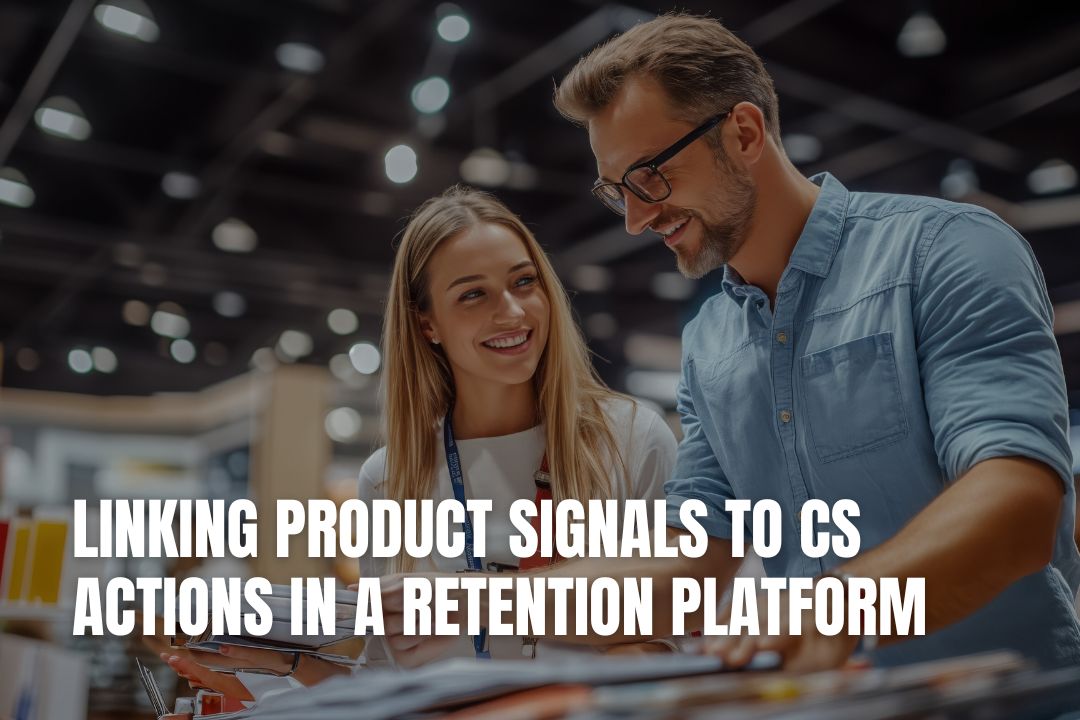
For any organisation seeking to sustain growth and foster customer loyalty, customer retention remains a critical priority. The retention platform is a game-changer in how teams start to anticipate needs. Companies are doing better by linking product signals with customer success (CS) actions, thereby increasing the engagement and satisfaction level of customers. This method enables teams to respond when they need to and strengthen customer relationships as a result.
User activity generates a substantial volume of signals indicative of product utilization effectiveness. These indicators may include usage frequency, adoption of features, and feedback trends. These alerts would facilitate a more comprehensive understanding of customer behavior for relevant teams. You can observe substantial engagement, or a significant decline, and subsequently respond before becoming overwhelmed in the news feed. Teams should be on the lookout for these signals in their customer retention software and identify patterns as early as possible.
Acting quickly on these notifications can literally change the course of events. If a customer decreases their usage, in-app offers can serve as a prompt reminder to reconnect. Identifying drops in the activity and responding quickly to it can save valuable clients. When customers receive support in a timely manner, they know that their concerns are being taken seriously and that help is available.
These product signals, when they manifest, need to be translated into unambiguous items for the CS teams. These tasks may encompass outreach, education, or problem-solving. By assigning actions that will be performed when a signal is emitted, we ensure that signals are not going to pass unnoticed. This stage assists with turning raw information into significant mediations and assembling trust among clients.
For this, we need a feedback loop between product and CS teams. Product signals should pass information directly to support teams. They can then relay information to product managers regarding repeated problems or adopted functionalities. This cycle not only improves the product but also the customer experience.
Personalised interventions significantly improve retention. Product signals frequently reveal the unique preferences and challenges of a user. When you shape your responses around this insight, you create impact. For example, if a user has difficulty using some new function, providing them with personalised help may solve the problem and boost satisfaction.
This automation constitutes a critical component in generating a signal that triggers CS action. Automated alerts can assign the necessary tasks to the correct personnel. This feature saves time and avoids passing up opportunities. Consistent attention to changing product signals and automated workflows guarantees consistency, meaning every customer receives attention as product signals change.
It is important to track how customer success (CS) actions are impacting outcomes. Validate that interventions targeted for product signals lead to better retention. Teams should measure this. Using the outcomes from such strategies enables refinement in practices and optimal resource utilisation. By regularly reviewing these actions, businesses are able to remain proactive and responsive.
Open communication between teams also helps bridge the gap between signals from the product and actions taken by CS. Insights should be circulated regularly between product managers, support staff, and analysts. This ensures that all teams work towards common objectives. Getting together stands a better chance of user retention.
Teams need training to identify product signals. Employees must know the specifics of each alert and be aware of the proper responses. Ongoing education also ensures preparedness for emerging types of signals as products evolve. The more informed the staff, the more sound the decisions made, and the greater the effectiveness of the support offered.
Building trust requires transparency. Customers would like to know what feedback they provided or what usage patterns were involved in prompting outreach. Explaining why we are using certain solutions/interventions shows respect for what the customer might like. Encouraging open dialogue between users builds loyalty.
Improvement is driven by continuous analysis of product signals and CS actions. Teams should analyse data regularly to monitor new trends. The results can be leveraged in the form of new retention and engagement strategies. Continuous learning enables companies to stay ahead of consumer demands.
Connecting product signals to CS actions transforms retention strategies. Quick and thoughtful responses turn data into customer loyalty. By personalising interventions, automating workflows, and fostering collaboration, businesses improve satisfaction and retention. Regular data analysis and transparent communication further strengthen these efforts. Companies that focus on these connections create lasting relationships and set themselves up for ongoing growth.
Product signals are data points that show how a customer is interacting with your product. They can include how often they log in, which features they use most, their feedback trends, or a sudden drop in activity. These signals give you valuable clues about their health as a customer.
A timely response can make the difference between keeping and losing a customer. For example, if you notice a user's activity has declined, reaching out with a helpful tip or a special offer can re-engage them before they decide to leave for good. It shows you are paying attention and value their business.
You should set up a system, often within a retention platform, where specific signals automatically trigger tasks for your customer success team. A signal for low feature adoption could create a task to schedule a training call, while a negative feedback signal could prompt an immediate outreach call to resolve the issue.
Automation is essential for efficiency and consistency. It ensures that important signals are never missed and that tasks are assigned to the right person immediately. This frees up your team from manually monitoring data so they can focus on high-value interactions with customers.
When you reach out based on a customer's specific usage patterns, it shows you understand their unique challenges and needs. Being transparent about why you are contacting them, for instance, explaining you noticed they were struggling with a feature, demonstrates a genuine commitment to their success and builds a stronger, more loyal relationship.